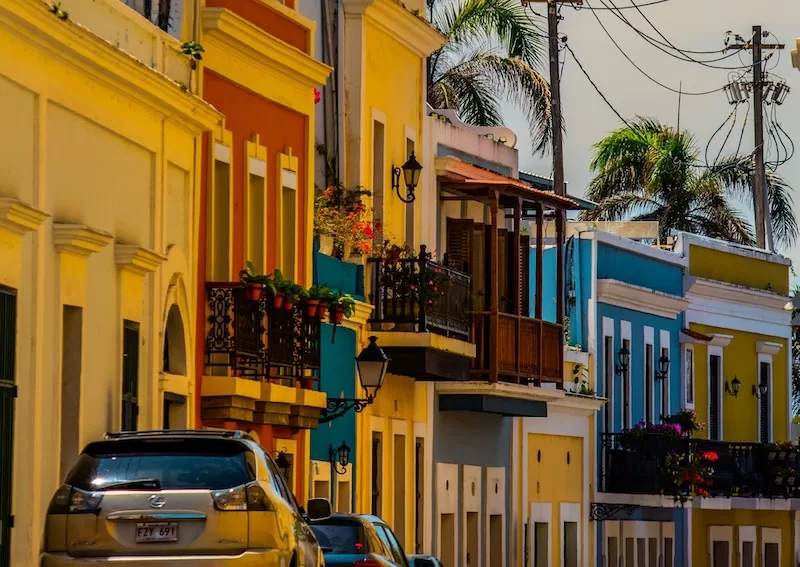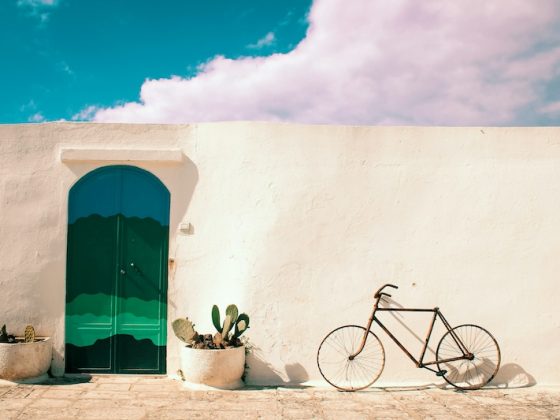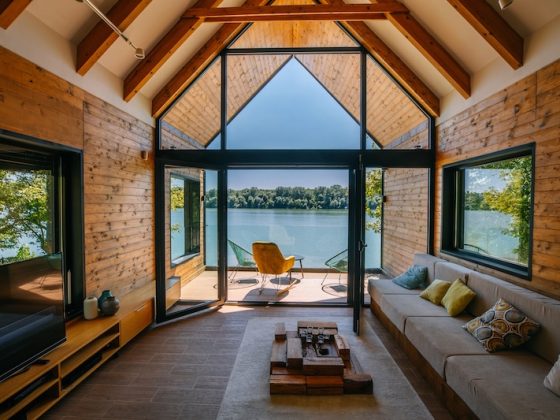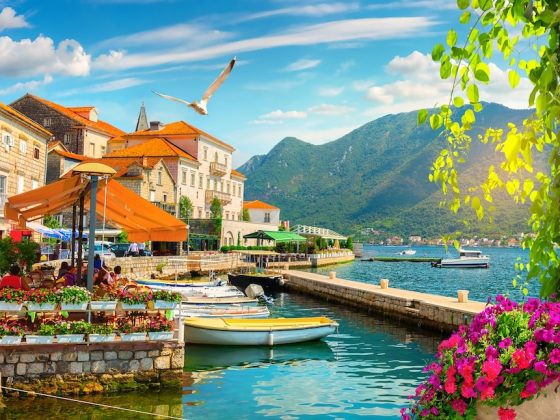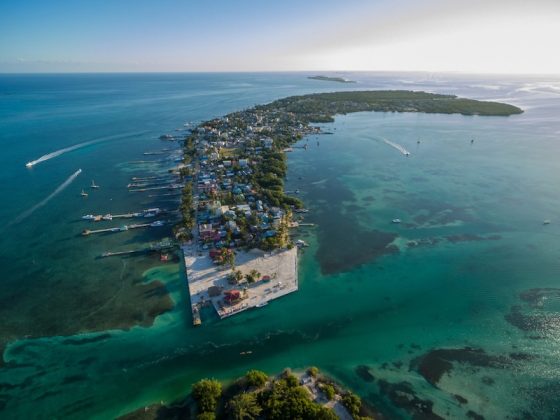Introduction
For many U.S. citizens searching for a new chapter that still feels familiar, the idea of considering Puerto Rico for retirement begins with a small but powerful thought: you can trade winter boots for sandals without giving up Medicare. You can pay at the supermarket with familiar bills while catching the scent of fresh mofongo from a nearby food stand. You can leave behind long commutes and replace them with slow mornings on a balcony where coquí frogs sing their last notes before sunrise.
Retirees already living on the island often describe the same moment of realization. It comes when a plane lands in San Juan and they remember they did not need a passport. It comes while strolling a local plaza and hearing English and Spanish blend in the same friendly greeting. It comes when they look at their finances and understand that certain tax benefits and lower housing costs make life feel more possible again.
The aim here is to look closely at that possibility. Puerto Rico offers financial perks, familiar legal systems and a warm climate that invites people outdoors. It also presents real considerations: storms that reshape routines, power outages that require backup plans, and cultural transitions that take patience.
This guide brings together what seasoned retirees have learned on the ground so you can picture the life behind the brochure. It is practical and sensory, numbers paired with neighborhood reality, so every decision becomes clearer.
Why Consider Puerto Rico for Retirement
U.S. citizenship and legal simplicity
Retirees often talk about the comfort of arriving somewhere new without feeling like a foreigner. In Puerto Rico that comfort is built into the foundation. The island is part of the United States, so U.S. citizens come and go with the same rights they have on the mainland. There are no visa applications to chase, no anxious meetings at immigration offices, and no clock ticking down days on a permit.
Daily life continues in a familiar currency. Social Security checks still appear on schedule. Banking, healthcare billing, and legal documents follow systems retirees already understand.
That familiarity eases the emotional weight of moving. Instead of spending the first months untangling bureaucracy, retirees can spend time learning local corner cafés, finding the right beach chair, or taking Spanish lessons at a community center. The transition becomes less about starting over and more about shifting gears.
There is still learning ahead. Puerto Rico has its own laws and tax codes and it rewards those who take time to understand them. A sense of “you already belong here” simply gives you a running start.
Tax incentives and financial planning
Money plays a leading role in retirement decisions and Puerto Rico offers financial tools that attract people who want their savings to work harder. Legislation such as Act 60 can create advantageous outcomes for residents who qualify. These incentives may apply to investment earnings, certain dividends, and capital gains for people who establish genuine residency on the island.
Even with strong incentives, everyone still has to check the fine print. Social Security checks continue, but a share of that income may still fall under federal taxation depending on your financial situation.
Many retirees on the island prove that the numbers can line up. Average retirement income has been estimated at about $35,321 USD composed of $19,628 USD from pensions or retirement accounts combined with $15,693 USD from Social Security. That income, paired with lower housing costs in many regions of Puerto Rico, often stretches further than it might in a mainland city apartment several times the price.
The appeal becomes easy to understand. Puerto Rico combines financial opportunity with a more laidback lifestyle and lets retirees redirect energy toward early morning boardwalk walks or long lunches instead of worrying about budgets tightening year after year.
Climate, wellness and outdoor living
Puerto Rico invites a type of health that does not depend on gym memberships or strict routines. The weather leans warm year-round. Mornings can start with a short walk on the sand or a swim that feels more like play than exercise. Retirees frequently report that they move more and stress less simply because life keeps nudging them outdoors.
Fresh fruit markets, small local bakeries, music from an open doorway and a pace that rewards lingering in conversation all feed wellbeing. Even the social element of retirement becomes easier. People gather in plazas to chat. Neighbors greet each other on balconies. Newcomers find that connection happens naturally when the streets encourage people to be outside.
The climate supports energy levels and gives retirees more days where joints feel loose instead of stiff. It is easier to fill life with habits that support a long, healthy chapter when the environment sets you up to enjoy them.
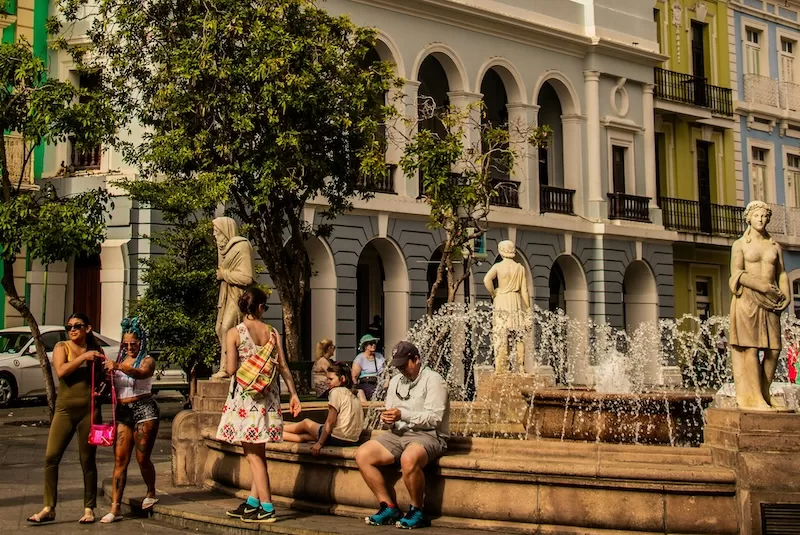
Cost of Living and Housing Realities
Housing market snapshot
Picture this: a one-bed apartment in the heart of San Juan where the churn of taxis, the flick of streetlights, and the sway of palm trees all signal you’re not in Kansas anymore, but still in the U.S., bottom-line. That apartment can rent for around $900 USD/month. Of course you can find higher prices depending on the neighborhood and characteristic of the apartment or house you choose, but it’s possible to find good accommodation for as low as that. Move just outside the city center and the cost drops further, perhaps to around $600 USD/month.
Buying a home offers similar surprises. The sticker-price in San Juan for a purchase might be around $232 USD per square foot in the city center. That gives retirees who scout for value a chance to own property at a fraction of some mainland markets.
That said, the island is not uniform. Coastal hot-spots and gated resort communities push prices up. A one-bed in a luxury beachfront tower may cost far more if you want marble floors and ocean-glance balconies. Meanwhile, inland towns or suburbs may offer very different value.
For those who arrived with experience, the trick is simple: define your lifestyle expectations and match them to a neighborhood, not just a glossy ad. A retiree well-versed in the island’s economy will compare “beachfront condo in Condado” with “family home in the interior hills” not just in terms of dollar signs but ease of living, insurance costs, hurricane readiness and long-term maintenance.
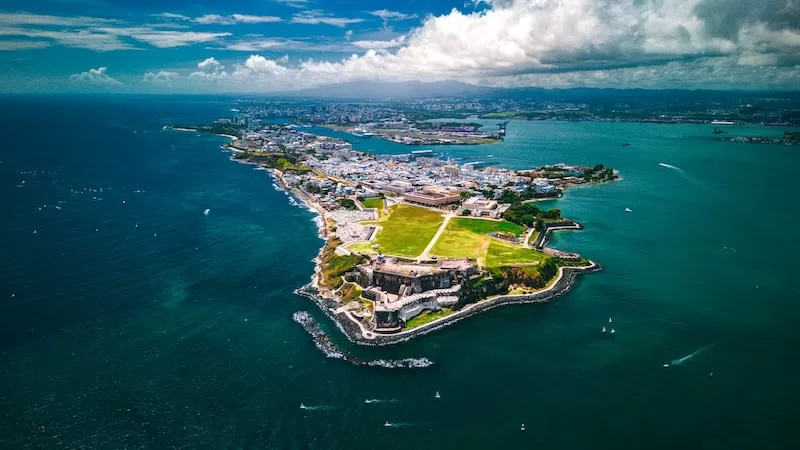
Everyday expenses: groceries, utilities, transport
Owning or renting a home is one thing; living inside it is another. For example, although housing may cost less, electricity bills tend to lean high thanks to tropical heat, air conditioning use, and a grid still recovering from past storms. Some sources point to energy costs of around $350 USD a month.
Pro Tip: Choose a home with good cross-breeze and ceiling fans. It keeps electricity bills manageable and avoids running AC all day in the hotter months.
Groceries reflect a dual reality: local fruits, fish and produce often cost little and taste like next-door freshness; imported cheese, certain packaged goods or specialty items may carry a premium. Bananas may cost around $0.80 USD per pound, a bottle of milk costs about $5.33, a dozen eggs go for around $4.55 and a pound of potatoes circles around $4.71. Some imported staples remain higher than mainland equivalents.
Transportation and shipping matter too. Fuel and car maintenance may not be wildly cheaper than the U.S. mainland; if you’re commuting or driving a lot, those costs stack up. Public transport systems outside major zones are still limited.
In short: many retirees find their money stretches further, but the savings are not automatic. There is no magical “all-cheap” tag. A renter who picks a beachfront luxe unit and eats imported gourmet goods may spend more than someone in a modest inland neighborhood living primarily on local produce. One estimate placed the overall cost of living in Puerto Rico at roughly 10% lower than the U.S. average and rental cost up to 50%-plus lower.
For the retiree who has learned the lay of the land, the wise approach is: pick a slightly less flashy area, locate quality housing that matches lifestyle (not hype), budget for higher utilities and shipping, and trade in high-cost luxuries for everyday value.
Monthly Budget Snapshot
The amount you need each month in Puerto Rico depends on location, housing style, and how active your lifestyle feels. A serene inland town and a beachfront community will shape your budget very differently. Here is a range overview to help picture the financial side:
| Lifestyle Type | Where You Might Live | Monthly Budget Estimate | What Life Looks Like |
| Modest & Comfortable | Smaller town or inland area like Cayey | $2,000-2,500 USD/month | One-bedroom or small home, local produce, simpler routines, occasional restaurant meals |
| Balanced & Social | Coastal gems like Rincon or outskirts of metro San Juan | $2,500-3,500 USD/month | Walks to the beach, some dining out, clubs or activities, reliable utilities budgeted |
| Upscale & Active | Dorado, Palmas del Mar or central San Juan | $3,500-5,000+ USD/month | Golf, marina outings, private insurance add-ons, higher utility and housing costs |
Retirees who thrive financially here track their first year closely. A handful of small adjustments (better cross-breeze in the home, learning the local produce markets, picking a clinic nearby) shift a budget from stressful to sustainable.
Pro Tip: Do a three-month trial stay in your preferred region before committing long-term. Track what you actually spend. It reveals the real budget faster than hypothetical spreadsheets ever will.
Read More Like This: What Living in Puerto Rico is Really Like
Healthcare, Services and Infrastructure
Medicare, local healthcare providers and specialists
Moving to the island with hopes of enjoying your retirement means understanding how health care really works here. In Puerto Rico your U.S. Medicare card continues to function; Part A and Part B work similarly to the mainland, and many doctors and clinics recognize it. In major metro zones you’ll walk into hospitals where bilingual staff greet you, equipment is up-to-date and U.S.-trained physicians serve you. For example, Hospital Auxilio Mutuo in San Juan is a large tertiary-care institution with extensive services. In nearby Guaynabo, Professional Hospital Guaynabo specializes in orthopedics and vascular procedures, underscoring the kind of specialist care you can find in the greater metropolitan area.
Still, you arrive with awareness. Retirees who have settled here know that not all areas are created equal. Outside the urban core the pool of specialists shrinks. For example, in some rural towns you may need to drive or even fly to reach a neurologist, a cardiologist or advanced surgery suite. A 2025 study titled “Puerto Rico’s Healthcare Workforce Study: An in-depth look at healthcare in Puerto Rico” has found there is a growing gap between the healthcare services people need and the number of professionals available to provide them. In many specialties the workforce is aging, which means more retirements on the horizon. Most specialist care is concentrated in major metro areas, leaving smaller towns with fewer options and longer drives for advanced treatment. This imbalance makes location choice especially important for retirees who want steady access to care.
The practical advice is: base yourself near a major medical hub if health services matter to you. One apartment a little further from the beach but close to a large hospital like Auxilio Mutuo may be a smarter retirement choice than a dream condo far from care.
Pro Tip: Bring printed copies of your medical history and prescriptions when you arrive. Clinics may not be able to quickly pull U.S. digital records, and having your file in hand avoids delays when you first need care.
Infrastructure and service realities
Beyond hospitals and doctors, the daily infrastructure of living well in retirement comes down to power, transport, internet, water service and how the island handles nature’s larger moments.
On the positive side, public transport, ride-share options and more walkable neighborhoods are increasingly available in towns like San Juan, meaning life gets easier without always relying on a car.
On the flip side: hurricanes leave their mark. In 2017 Hurricane Maria struck with horror, devastating power grids, hospitals and remote communities. While major centers have been largely rebuilt, the risk of outages remains.
Water, electricity or emergency access may not match the smoothness of a high-end U.S. suburb. Therefore, retirees often build into their plan: home generators, backup internet, flood or storm insurance, regular maintenance and clear escape routes. It becomes part of your lifestyle budget, not just a footnote.
Pro Tip: Keep a short list of trustworthy local handypeople. Micro-issues like AC maintenance, shutters, plumbing and generator work become recurring needs and it pays to have talent on speed dial before hurricane season.
What seasoned retirees emphasize
- Check how far your home is from the nearest hospital, especially if you have ongoing health needs.
- Confirm that the property you choose has solid storm-proofing, a decent backup power plan and a neighborhood with functioning street lighting and safe access during rough weather.
- Plan for supplemental insurance or private coverage if you want access to premium care; while standard Medicare works, some retirees upgrade for extra safety.
- Engage in community: many retirees find their best support networks through neighborhoods where walking is easy, neighbors know each other, and local clinics know your name.
In short, choosing Puerto Rico for retirement can deliver a healthcare and services environment far above many international retire-away spots but it is not identical to mainland standard. It rewards awareness, planning and choosing a location that matches your health profile, mobility and daily-living preferences.
Lifestyle and Location Options
Not every retiree imagines the same kind of life. Some want the sound of forks clinking in a lively restaurant. Others want to hear wind through banana leaves. Puerto Rico offers both, and then some. These five destinations are where retirees often feel their new life start to click.
1. Dorado
Best For: Retirees who want ease, convenience and upscale suburban comfort without sacrificing island character.
What Makes It Retiree-Friendly: Gated and well-maintained communities, proximity to services, strong expat presence, and modern infrastructure blended with beach living.
Dorado feels like life arranged for ease: neat sidewalk paths follow the edges of palms and well-kept lawns, golf carts glide past clustered homes, fairways and cafés, and the beach is rarely more than a short ride away. The northern shore town sits about 30-35 minutes from San Juan via PR-22, giving you major-city access without the traffic grind
In many neighborhoods you’ll see carts parked under carports, neighbors chatting on porches in the late afternoon, and grocery runs done after breakfast rather than saving for the weekend. English is sufficiently common that you can manage banking, prescriptions or utility issues without constant translation.
For example, the gated enclave of Dorado Beach East offers custom homes, a clubhouse pool, tennis courts and lush gardens. Another part of the town blends beachfront access, championship golf-courses and upscale restaurants.
Everyday errands feel simple. A pharmacy may sit two blocks from your door. A wellness clinic might be tucked into the same plaza as your smoothie bar. Even your weekend walk can end with a stop at a café for the 4 p.m. sunset brew.
At the same time, if you pick this life you buy into the higher-tier framework: housing comes at a premium compared with more remote parts of Puerto Rico, insurance is more expensive by the coast, and the community tends toward polished rather than rustic. But for many retirees, that trade-off is exactly the point: they arrived, they unpacked, and they settled into their new pace without bumping on too many “how-does-this-work” edges.
2. Rincon
Best For: Retirees who want ocean-centered living, barefoot mornings, and a friendly community that gathers for every sunset.
What Makes It Retiree-Friendly: English spoken widely, walkable beach access, relaxed routines that support well-being, and plenty of casual social opportunities.
Rincon is built on the language of waves. In the early morning the shoreline fills with slow-moving surfers and dog walkers letting the day begin at its own speed. Breezes glide through open-air cafés where the coffee is strong and the locals greet strangers with easy warmth. The town sits on Puerto Rico’s western tip, so each evening the sky becomes a community gathering. Once the sun starts dipping, people stop what they’re doing, turn toward the water, and let the spectacle take center stage.
Neighborhoods feel welcoming without overdesign. Small shops, yoga studios and markets cluster near the coast. You might find your new favorite breakfast spot in a converted house where shoes are optional and the barista knows your name after a week. English is common enough that errands feel smooth, yet Spanish is ever present, giving daily life a sense of place.
Everyday logistics stay approachable. Groceries and pharmacies sit close together. A quiet beach is always nearby. The vibe leans unpolished-in-a-good-way. That charm comes with realities: fewer high-end conveniences, modest medical clinics and a social calendar tied to nature rather than events. But retirees who choose Rincon tend to want precisely that: a life where the hardest decision is sandals or no sandals.
Those who relocate here describe something intangible but consistent: they breathe easier. The world feels softer. The next chapter starts with the sound of the ocean instead of an alarm.

3. San Juan (Metro Area)
Best For: Retirees who want culture, healthcare access, and city energy without losing island scenery.
What Makes It Retiree-Friendly: Major hospitals and specialists nearby, walkable neighborhoods, familiar goods and services, and direct flights to the mainland.
San Juan gives retirement structure and spark. Mornings can start along the Condado lagoon where joggers share the path with parents pushing strollers. Bustling avenues offer bakeries, banks and bookstores all within short walks. Grocery stores stock brands you once bought back home alongside local produce. Pharmacies never feel far.
The metro area also holds Puerto Rico’s strongest medical network. Top hospitals and bilingual specialists offer peace of mind for retirees who prefer knowing help is close. When family visits or medical appointments pull you stateside, Luis Muñoz Marín International Airport makes travel frictionless.
San Juan is not quiet and that’s the appeal for many. Music spills into plazas of Old San Juan. Restaurants open late. Museums and theaters fill calendars easily. This is retirement for those who still crave rhythm, learning and people around them.
Reality check: urban living means higher cost of housing and liveliness that doesn’t always take days off. But for retirees who want life to feel full, this is where days feel like they count.
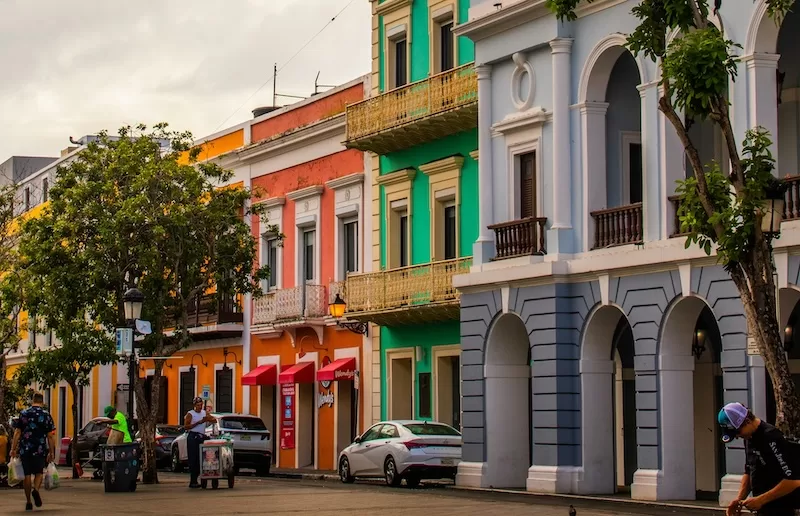
4. Palmas del Mar
Best For: Retirees who enjoy resort-style living, planned social life, and leisure activities always within reach.
What Makes It Retiree-Friendly: Master-planned layout, marina and golf course access, clubhouse community, and simplified daily logistics.
Palmas del Mar looks like the version of retirement many dream about. Boulevards lined with palms connect gated clusters of homes, each close to beaches, pools, tennis courts and golf courses. Golf carts serve as everyday transportation. The marina gives boaters a front-row seat to the Caribbean.
Errands barely feel like errands: a quick ride to the plaza for groceries, a smoothie, or lunch overlooking the water. Joining activities is effortless, since clubs and social groups already exist, welcoming newcomers. The shared rhythm creates immediate belonging.
Homes often come with thoughtful planning (hurricane shutters, backup systems, cooling breezes from the sea) and the community maintains strong standards. The trade-off is cost. Premium amenities and security come with premium pricing. Yet many retirees feel what they get in return is confidence: life that feels safe, social and easy to enjoy.
Palmas del Mar delivers the kind of retirement where you always have something to look forward to (a match, a dinner, a sunset sail) layered into every week.
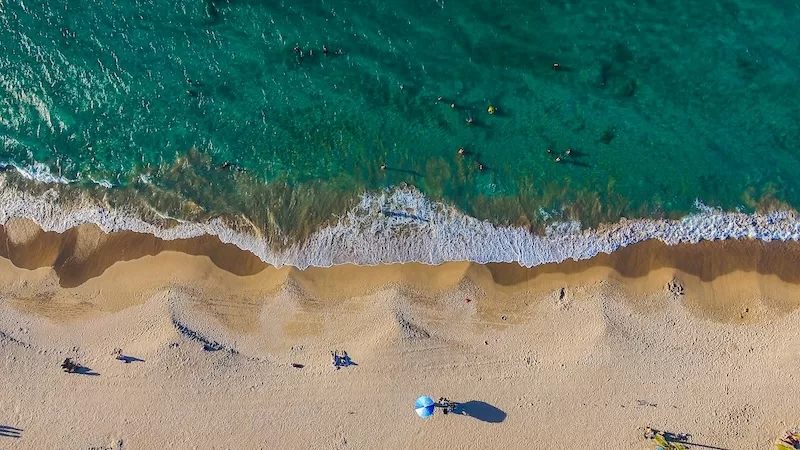
5. Cayey
Best For: Retirees who want cool breezes, nature at the doorstep, and meaningful everyday connection with neighbors.
What Makes It Retiree-Friendly: Lower housing costs, community-centric living, fresh mountain air, and slower routines that support health.
Cayey rises into the island’s green interior like a relief from the heat. Evenings call for light sweaters instead of AC. Humidity steps back. Gardens thrive and locals trade papayas and plantains over fences. At the Saturday farmers market, the produce is so fresh it still carries morning dew.
Life here happens face-to-face. People sit outside and talk with their hands. You might be invited to your neighbor’s barbecue before your boxes are even unpacked. Spanish helps, but patience and a smile go a long way.
You’ll find yourself leaning into healthier habits without even trying: morning walks along quiet streets, evenings spent on the porch, days with fewer screens and more sunshine.
Distance from major hospitals means planning matters, though. Roads can wind and narrow. But to retirees who choose Cayey, those trade-offs feel like the price of peace.
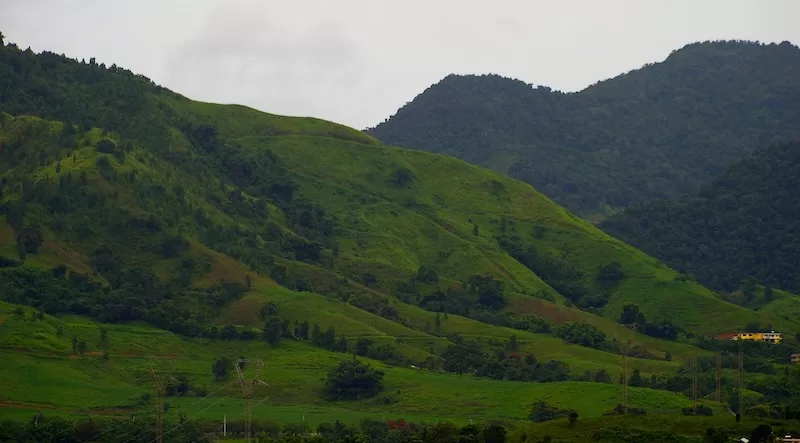
Pro Tip: Stay in at least two different locations before you commit. The island has many moods, and the right one always reveals itself when you give it time.
Culture, language and community integration
Living on the island means immersing yourself in a culture with roots that carry through generations. Spanish is the dominant language, but English gets you by in many retiree-friendly pockets. Embracing a few basic Spanish phrases deepens connection faster than any guidebook.
Community life tends to happen in plazas, local cafés, on walking paths, in chatty car parks rather than in the gated anonymity found in some retirement developments. Retirees who’ve adapted best describe the moment they realized “I’m no longer just visiting, I’m part of this place”: the neighbor who waves every morning, the fiesta going late into the night, the local market noticeboard where you recognize names.
Newcomers should give themselves time. You will probably have a honeymoon phase of “welcome, it’s paradise” then a test phase of “wait, what’s different here” then a settling phase of “okay, this works”. The magic is more in the third phase: when you know your butcher, your café, your favorite market vendor stall. That’s the part that writers don’t always sell.
Pro Tip: Join local interest groups early: walking clubs, Spanish classes, volunteer groups. These become not only social circles but also your emergency contacts when you really need someone nearby.
Practical Relocation Steps and Checklist
When planning for the move under the theme Puerto Rico for retirement, a smooth transition often comes down to following the right sequence, choosing location-specific priorities and avoiding the “pack up and wing it” trap. The next few pages are not just suggestions—they’re what seasoned retirees on the island wish they’d done before they unpacked.
Step 1: Visit, Test, Stay
Before committing, schedule a stay of at least 3 to 6 months in your chosen region. If leaning coast: rent in a beach-town for a few months, observe hurricane season, witness the buzz of tourism. If leaning inland/mountain: pick a quieter town, test commuting times to the nearest hospital, see how the weather and roads feel year-round. These trial runs reveal things brochures won’t.
Pro Tip: Plan your visit during both dry and hurricane seasons. The island’s personality shifts dramatically throughout the year. Experiencing both helps you decide if you are truly ready for August humidity and storm anxiety.

Step 2: Choose the Right Location for Your Priorities
- For coastal living: Look for a property near prime services: hospital, grocery, pharmacist, wave-sound morning walks. Check insurance and storm readiness.
- For mountain/inland living: Prioritize access to major medical hubs, good road access, backups for power/internet. Explore local Spanish-friendly communities.
Whichever you pick, factor in what matters long-term: health logistics, maintenance, community, cost of living.
Step 3: Establish Residency & Tax Footprint
Becoming a “bona fide resident” is critical if tax incentives matter. You’ll need to:
- Spend at least 183 days on the island per tax year.
- Make the island your primary home, update driver’s license, register to vote, open local bank accounts.
- Show your center of life is here (social ties, economic ties). If your mainland home still anchors your life, benefits may not apply. For those planning large investment income or Act 60 tax perks, draft this as part of your financial map now, not later.
Step 4: Home Search & Move-In Checklist
- Hire a real-estate agent who knows the island market, zoning, hurricane codes, insurance nuances.
- Inspect roofs, shutters, power-backup options. On the coast storms matter. Inland hills mean access roads and infrastructure matter.
- Take utilities into account: in many places, electricity is higher per kilowatt than your mainland expectation. Budget accordingly.
- For mountain zones, check cell/internet coverage, road clearing after rain, nearest specialist access.
- For beach areas, check tourist traffic, rental markets (if you plan part-time use), flood risk and homeowner’s insurance quotes.
Step 5: Healthcare & Local Services Setup
- Even with U.S. citizenship and Medicare eligibility, check local provider networks in your town. Some towns have fewer specialists.
- Choose a primary-care clinic and hospital you trust early. Meet the doctor, ask about referrals to specialists.
- Get local insurance quotes (supplemental or private).
- Make sure any medications you use are easily available on the island or plan for shipping/resupply.
- If you choose mountain/inland life, map out emergency travel routes to the nearest major hospital.
Step 6: Financial & Legal Setup
- Talk with a tax professional who understands both mainland U.S. and Puerto Rico law. Mistakes can erase expected benefits.
- Update estate plans: wills, trusts, property titles. Living in a U.S. territory means U.S. laws still apply but with territorial nuances.
- Check your income sources: Social Security flows in. But investment income, capital gains and pension income may behave differently in the territory.
- Budget extra for disaster-related contingencies: generator, insurance, extra supplies.

Step 7: Build Community & Routine
- Find local clubs or groups (walking, gardening, art). Pick up basic Spanish phrases. The deeper the community, the richer your retirement.
- Explore volunteer opportunities. Many retirees say the moment they felt “at home” was when they recognized names at the local café, knew the bus driver, greeted neighbors in Spanish.
- Structure a routine that fits your chosen setting: morning beach walk (coastal) or afternoon trail stroll (mountain).
Step 8: Monitor & Adjust
- Year One is your test year. Track spending, travel days, medical access, energy bills.
- Each year revisit: Are you spending significantly more than expected because of utilities or travel? Adjust your plan or location if needed.
- Stay on top of tax compliance and residency rules, losing “bona fide resident” status means losing many benefits.
Pros and Cons Summary
Choosing Puerto Rico for retirement means picturing a full life, not just a postcard. The strengths are real and rewarding. The challenges require planning. Retirees in the island talk about both with equal honesty.
Pros
• Simple relocation for U.S. citizens
No visas, no confusing immigration process. Your Social Security, Medicare and everyday banking continue as normal. Life starts quicker when paperwork does not stand in the way.
• Financial opportunities that reward good planning
Housing often costs less than many mainland coastal cities. Tax rules may favor residents with investment income once bona fide status is established. Retirement savings can stretch into more days that feel worth living.
• Lifestyle rooted in sun, community and movement
Warm weather invites morning walks instead of indoor treadmills. Local culture encourages conversation and inclusion. It becomes easier to stay active and connected.
• Choice of daily vibe
Beach towns for those who crave sea air and social energy. Mountain towns for cooler breezes and quieter community routines. The island lets you choose your favorite vibe.
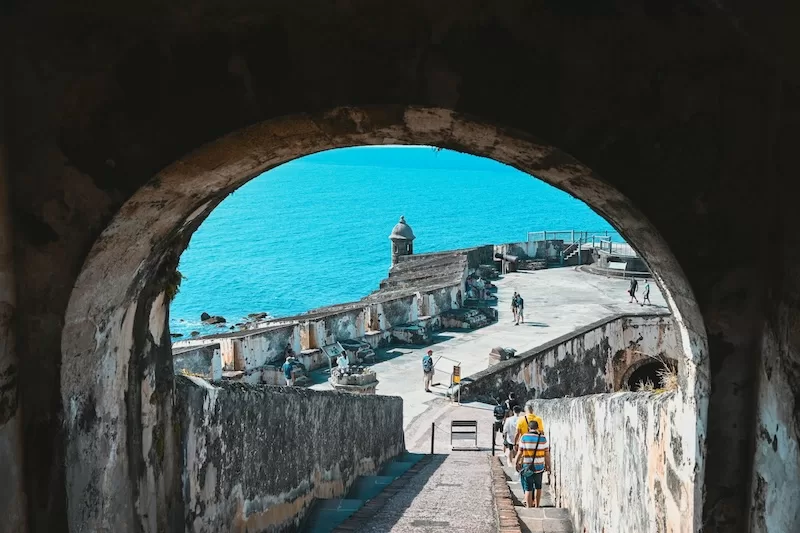
Cons
• Infrastructure is improving but not flawless
Storms and power outages remain part of life. Generators, home insurance and backup plans become standard for retirees who prepare well.
• Healthcare access varies by location
Large hospitals and specialists are mainly in metro areas. Retirees with ongoing medical needs may prioritize proximity to services over scenery.
• Some everyday costs run high
Electricity, imported groceries and fuel can surprise newcomers expecting across-the-board savings. A smart budget considers island pricing, not mainland assumptions.
• Tax benefits are not universal
Incentives like Act 60 apply only to residents who meet specific criteria. They are powerful tools, but not guaranteed for every retiree. Financial guidance is essential.

FAQs
Q1: Can U.S. citizens retire in Puerto Rico without a visa?
Yes. Puerto Rico is a U.S. territory, so American citizens can relocate freely without visas or immigration paperwork.
Q2: Will Social Security benefits continue if I retire in Puerto Rico?
Yes. Social Security payments continue uninterrupted for eligible U.S. citizens living on the island.
Q3: Does Medicare work in Puerto Rico?
Medicare typically applies, though availability of specialists varies by region. Many retirees secure supplemental or private insurance for broader access.
Q4: How much does it cost to retire in Puerto Rico compared to the mainland U.S.?
Costs can be lower overall, especially housing. Average retirement income figures suggest many retirees make their budgets work well here. Refer to our sample Monthly Budget breakdown for a clearer overview.
Q5: Are Puerto Rico’s tax incentives automatic for retirees?
No. Popular advantages require bona fide residency and are often geared toward newcomers with investment income. Requirements must be clearly met to qualify.
Q6: What should I watch out for before relocating?
Key risks include hurricane impact, infrastructure outages, local provider availability, shipping costs for goods and understanding the fine print of tax residency.
Q7: How should retirees prepare for hurricanes and storms?
Storm resilience is essential. A good plan includes strong insurance, storm-ready housing and backup power, especially given infrastructure challenges after major hurricanes.
Q8: What everyday costs surprise retirees most?
Electricity, imported groceries and fuel may run high. The best savings occur when choosing housing wisely and leaning into local products and services.
Q9: What should retirees know about healthcare specialists on the island?
Specialty care is concentrated in metro regions. Retirees with medical needs often choose locations closer to major hospitals for convenience and peace of mind.
Island Transition, Smart Retirement
Retirement opens a door that many people spend years staring at. Puerto Rico offers the chance to step through it with confidence. Mornings by the ocean, community get-togethers in local plazas, and the comfort of U.S. systems still supporting you in a place that feels fresh. There will be new routines to learn and occasional challenges to navigate, yet the rewards often outweigh the unknowns.
If the idea of living somewhere warm and welcoming keeps returning to your thoughts, consider it a sign. Plan a scouting trip. Stay a few weeks in the neighborhood you imagine calling home. Walk to the café. Visit a clinic. Explore the market stalls that might become part of your weekly rituals. That is how you will know if the island’s rhythm suits your own.
This chapter of life can be more than comfort. It can be a place where your days feel like they belong to you again.
To keep exploring smart retirement moves in Puerto Rico and other destinations, join our community of readers who are building their next chapters with clarity and purpose. Subscribe for guidance, practical tools and real experiences that help you move forward with conviction.
Your next home might already be waiting. Let’s help you find it.
Contact Author
"*" indicates required fields
Stay Ahead on Every Adventure!
Stay updated with the World News on Escape Artist. Get all the travel news, international destinations, expat living, moving abroad, Lifestyle Tips, and digital nomad opportunities. Your next journey starts here—don’t miss a moment! Subscribe Now!
